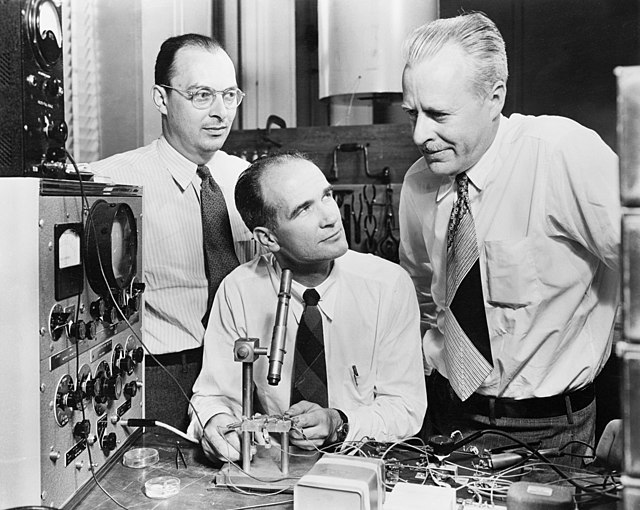Bipolar junction transistor
A bipolar junction transistor (BJT) is a type of transistor that uses both electrons and electron holes as charge carriers. In contrast, a unipolar transistor, such as a field-effect transistor (FET), uses only one kind of charge carrier. A bipolar transistor allows a small current injected at one of its terminals to control a much larger current flowing between the terminals, making the device capable of amplification or switching.
Typical individual BJT packages. From left to right: SOT-23, TO-92, TO-126, TO-3
Die of a 2N2222 NPN transistor—bond wires connect to the base and emitter.
A transistor is a semiconductor device used to amplify or switch electrical signals and power. It is one of the basic building blocks of modern electronics. It is composed of semiconductor material, usually with at least three terminals for connection to an electronic circuit. A voltage or current applied to one pair of the transistor's terminals controls the current through another pair of terminals. Because the controlled (output) power can be higher than the controlling (input) power, a transistor can amplify a signal. Some transistors are packaged individually, but many more in miniature form are found embedded in integrated circuits. Because transistors are the key active components in practically all modern electronics, many people consider them one of the 20th century's greatest inventions.
Size comparison of bipolar junction transistor packages, including (from left to right): SOT-23, TO-92, TO-126, and TO-3
Julius Edgar Lilienfeld proposed the concept of a field-effect transistor in 1925.
John Bardeen, William Shockley, and Walter Brattain at Bell Labs in 1948; Bardeen and Brattain invented the point-contact transistor in 1947 and Shockley invented the bipolar junction transistor in 1948.
A replica of the first working transistor, a point-contact transistor invented in 1947





